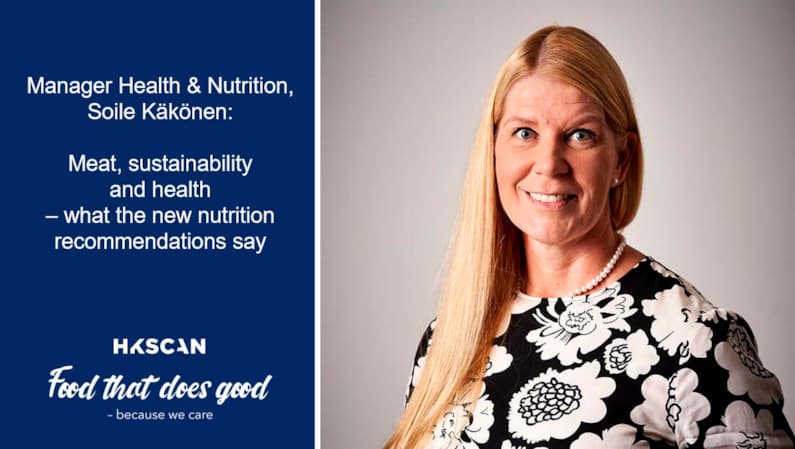The content of the new Nordic nutrition recommendations has been widely reported even before their publication, thanks to a transparent process during which anyone interested could comment on them. Now the recommendations have been published and they guide the population towards sustainable eating. The previous update in 2012 added physical activity in the recommendations. This year, the sustainability dimension was integrated, a challenge that has also been recognised by food producers and food companies. Food companies are taking a close look at the recommendations, which form the basis of their nutrition communication, product development guidelines for healthy products and nutrition strategy priorities.
Many things changed in the new nutrition recommendations, but the basic message remains the same: eating a plant-based diet is the foundation of a healthy diet. The key is flexibility: there are many ways to eat well. There are no forbidden or allowed foods, but foods to be favoured and foods to be eaten less often. More vegetables, fish and pulses; less red meat and foods containing plenty of salt, sugar and fat are recommended on our plates.
When you eat meat, go for local
According to the new recommendations, no more than 350g of red meat should be eaten per week. No quantitative recommendation is made for white meat, i.e. poultry, but its share should not be increased from the current level. This is justified on environmental grounds. It means that ruminant meat, whether beef, lamb or game, or pork, should not exceed 50 g per day. As the recommendations emphasise diversity, I see no need to estimate the daily amount of red meat; meat can be eaten 2-3 times a week, and other meals can include fish, pulses or chicken. I would also recommend digging out grandmother's cookery books, as the meat content of meat dishes is often in line with current recommendations.
From a health perspective, the red meat recommendation emphasises the nutritional diversity of meat. No single food is irreplaceable. We can do without meat, but even a small amount makes it easier to have a varied diet, as meat naturally contains good quality naturally-absorbed protein, B vitamins and minerals such as iron and zinc. In addition, poultry meat has good fat quality. When consumed as recommended, meat contributes to good health.
The recommendations put Brazilian beef on a par with Finnish beef, although we know that production methods differ in terms of animal feed and deforestation impacts, for example. We also have a more sustainable production of pork and broilers, which are mainly grown on domestic feed. In the Nordic countries, animal welfare laws are among the strictest in the world and antibiotics are not used as a preventive measure or to promote growth. Yet the origin of meat, let alone the method of production, is not mentioned in the recommendations, unlike in the case of fish, for example. From an environmental point of view, it is not irrelevant how the fish, meat or vegetables we put on our plates are produced.
Meat products as a special treat
The recommendations include meat products, such as sausages, cold cuts and bacon, as dietary treats that belong more on the festive than on the everyday dinner table. From a responsibility point of view, meat products are beneficial use of animals raised for human consumption, as they make use of parts of the carcass that are less in demand elsewhere. This does not mitigate the fact that they are a significant source of fat and salt in our diets.
Towards national nutritional recommendations, without forgetting the origin
The next step is to update the national recommendations based on the Nordic nutrition recommendations. These will try to take into account local food culture. One aim is to motivate people to follow the recommended diet. Only a small proportion of the population follows the current recommendations, the main stumbling blocks being too little use of vegetables and, for some, high intake of red meat. It remains to be seen how national recommendations and their increasingly stringent targets will succeed in motivating the population towards sustainable and healthy food choices.
Responsibility is about understanding where food comes from and how it is produced. Traditionally, nutrition recommendations have not taken into account the origin of food, and while the background documents discuss the differences between Nordic and global food production, the recommendations themselves have overlooked the importance of origin.
Recent years have been full of crises and reminders of the need to take care of national food production. That is why I am surprised that the Nordic nutrition recommendations do not take into account self-sufficiency or security of supply. I hope that future national recommendations will value the origin of food, so that not only health and climate but also responsible food producers will benefit.


